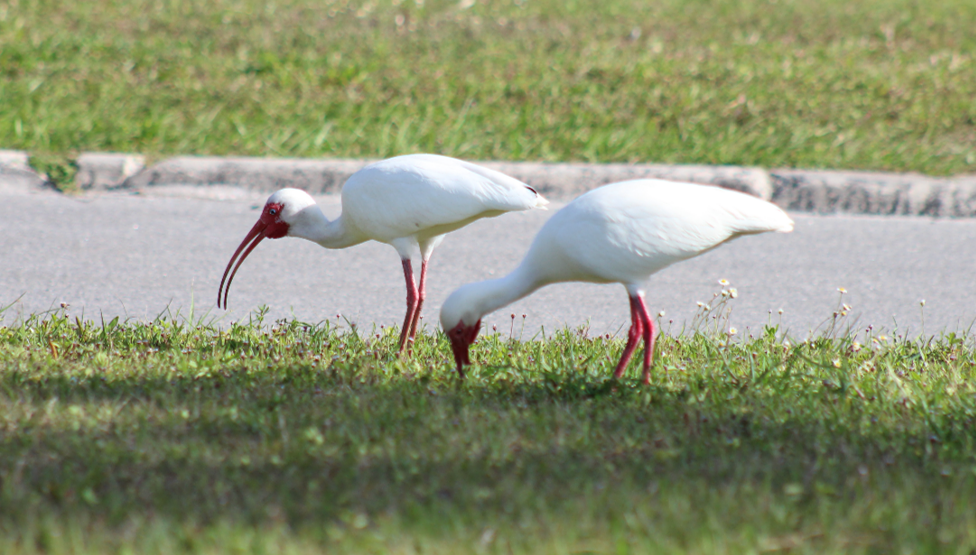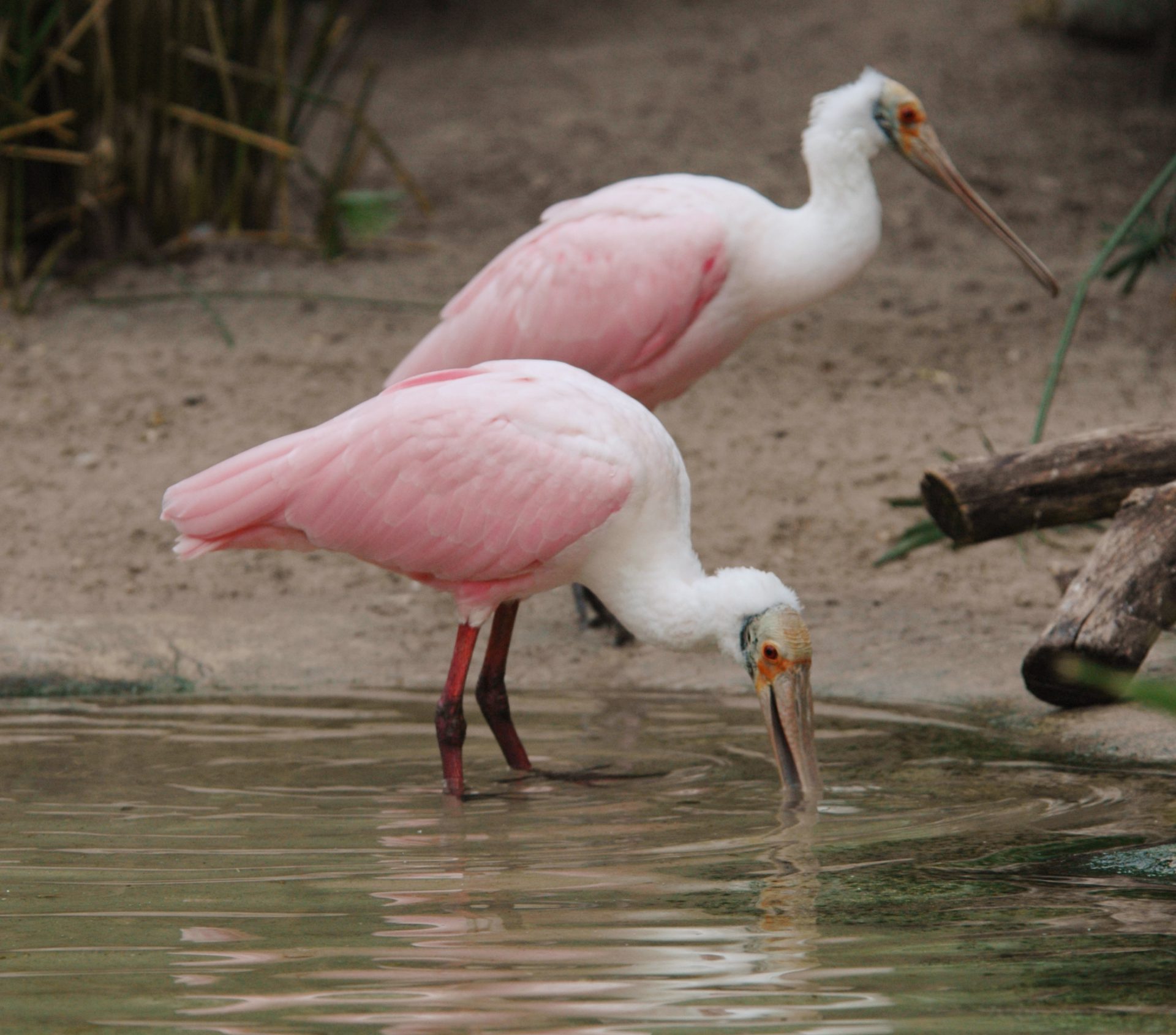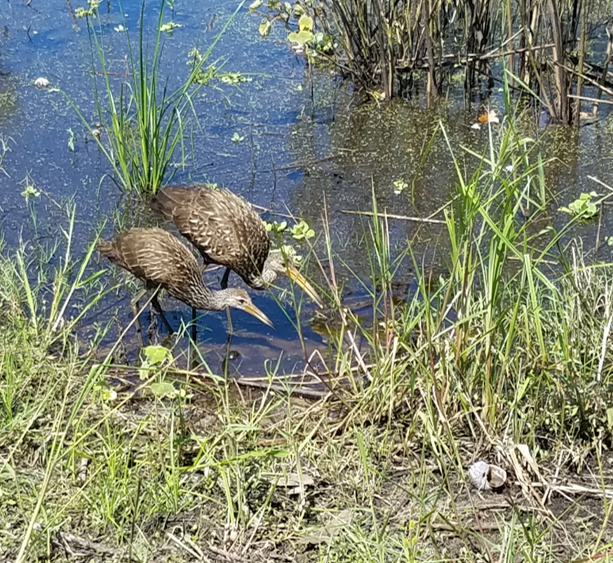If you live in Florida…
Odds are you have seen a wading bird going for a leisurely stroll. Typically spotted perusing the wetlands, patiently waiting motionless for prey, or soaring through the air alone or in a flock of hundreds. Wading birds are instantly recognizable and their laid-back and gregarious personalities make for a birder’s best friend.
Dive in to learn more about our wonderful wading birds of Florida, or watch our Wild Sarasota Webinars on Heron and Cranes, Egrets, and Other Common Wading Birds of Florida for a more in depth look.

What is a Wading Bird?
The term wading bird is used as an umbrella term, and is a group that is comprised of many different species that share certain characteristics. Although, each species varies in size, shape and color.
Fortunately for the local birder, Florida is home to a wide variety of these beautifully unique birds. The presence of wading birds in Florida is due to our many freshwater wetland marshes and swamps, rivers, shallow waters, coastlines and warm climate.
Walking Birds
A common physical characteristic shared between wading birds is long, thin legs with strong toes that give them a firm balance when walking through water or muddy wetlands. From a Great Egret (Ardea alba) to a White Ibis (Eudocimus albus), there is an undeniably calm aura that the wading bird embodies while gracefully roaming, in search of food or simply enjoying the weather, rain or shine.

Built for Success
Each wading bird has a unique bill that directly contributes to its diet and habitat.
The Roseate Spoonbill’s (Platalea ajaja) unique bill, as the name implies, is spoon shaped. This design gives the bird an advantage as it uses its bill to sweep through shallow water while partially open to hunt for its prey. The Roseate’s bill, similar to the Wood Stork’s (Mycteria americana) is also equipped with tactile receptors along the edge of it’s bill. These receptors are so sensitive to touch that this bird does not even need to use its eyes while foraging for prey; once the bill senses the presence of its prey, it immediatly snaps shut.
Another particularly unique bill belongs to the Limpkin (Aramus guarauna), whose diet greatly depends on hunting apple snails. Its bill is long, thicker than most, and slightly curves downwards and tips off to the right. Making it the ideal tool to pick a snail right out from the inside of its shell.
Habitat

Wading birds enjoy a range of habitats, including coastal marshes, wooded wetlands, mangroves, estuaries, pastures, and crop fields. In general, this group is highly dependent on wetlands to meet their needs. Wading birds forage in wetlands, where they hunt aquatic and terrestrial invertebrates, fish, amphibians, reptiles, and crustaceans.
Wetlands, especially rookeries, are also important nesting habitats. A rookery is a breeding colony of birds, common among many of Florida’s wading birds. Rookeries are often formed in mangrove islands along our coasts or in tree islands in the middle of freshwater wetlands. The nests, eggs, and young birds are better protected from predators on these rookery islands. In Sarasota you can see colonies of nesting egrets, herons, cormorants, anhingas, spoonbills, and more at Venice Area Audubon Rookery and rookery islands in the intercoastal and Sarasota Bay. Audubon’s Corkscrew Swamp Sanctuary and its old growth cypress trees boast the most productive wood stork breeding colony in the United States!
This is yet another reason that we must make an effort to maintain water quality and biodiversity in our ecosystems – to ensure the well-being of Florida’s wading bird population.

Great Places to see wading birds in Sarasota County
Sarasota County is home to an amazing array of birding hotspots. If you are most interested in wading birds, here are some spots to try. Don’t forget your binoculars and camera! And whether you are hiking, biking, kayaking, or boating to go birding… Remember that all wading birds, their feathers, nests, and eggs are protected by federal law.
To Learn More About Wading Birds…
- For all of your wildlife interests, take a look at the UF/IFAS Extension Sarasota County’s Florida Wildlife page.
- Watch our Wild Sarasota Webinars: Herons and Cranes, Egrets, and Other Common Wading Birds of Florida
- Learn how to identify other wading birds at www.allaboutbirds.com
Read all our Wild Sarasota blogs HERE
 0
0
